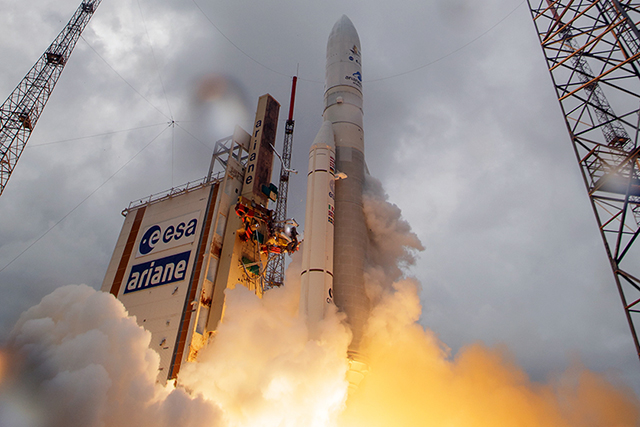Aerospace Engineering
Our aerospace engineering programs equip you with the advanced technical expertise and cutting-edge knowledge demanded by the rapidly evolving aerospace industry. With a curriculum designed to tackle the most complex challenges in aerospace design, systems, and innovation, you'll be prepared to lead and make impactful contributions in this high-tech field.
Applications for the master’s in aerospace engineering are being accepted until June 1.

Explore the Field of Aerospace Engineering
What is Aerospace Engineering?
Studying aerospace engineering prepares you to design, build, analyze, and work with technology related to air and space travel, and related systems. Aerospace engineers design and improve airplanes, helicopters, rockets, air taxis, satellites, and other technology.
Why Study Aerospace Engineering?
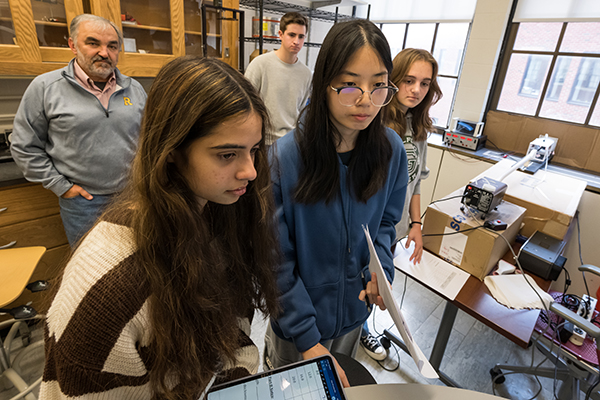
Aerospace is an industry of growth. The US Bureau of Labor Statistics predicts that employment of aerospace engineers will grow 6 percent from 2023 to 2033, faster than the average for all occupations. The aerospace industry has emerged as the top destination for our recent alumni from mechanical engineering and other programs, with significant numbers of recent graduates heading for jobs at companies including L3Harris, Lockheed Martin, and Collins Aerospace.
Our faculty have deep expertise in key areas of aerospace engineering including fluid dynamics, optics, structural mechanics, and data science. Receiving hands-on experience in these fields teaches students how machines fly, sensors work, and how to put these together to create innovative aerospace technologies.
Will it Work with my Undergraduate Degree?
Rochester’s aerospace engineering master’s program and minor are designed to be compatible with a wide range of undergraduate majors—not just mechanical engineering. Here are some fields of study that align especially well:
Chemical Engineering
Develop new materials that can withstand the extreme conditions experienced in space
Computer Science
Develop software, data processing, simulations, and navigation systems to aid flight
Data Science
Leverage machine learning to aid with controls for aircraft and spacecraft
Electrical and Computer Engineering
Create robotics, communications systems, flight controls, and other crucial systems for flight
Mechanical Engineering
Design aircraft and spacecraft that can successfully operate under demanding circumstances
Optics and Optical Engineering
Develop sensors, lenses, and navigation components that are crucial for satellites, aircraft, and spacecraft
Physics
Predict and explain the fundamental forces of flight and how aircraft and spacecraft will operate
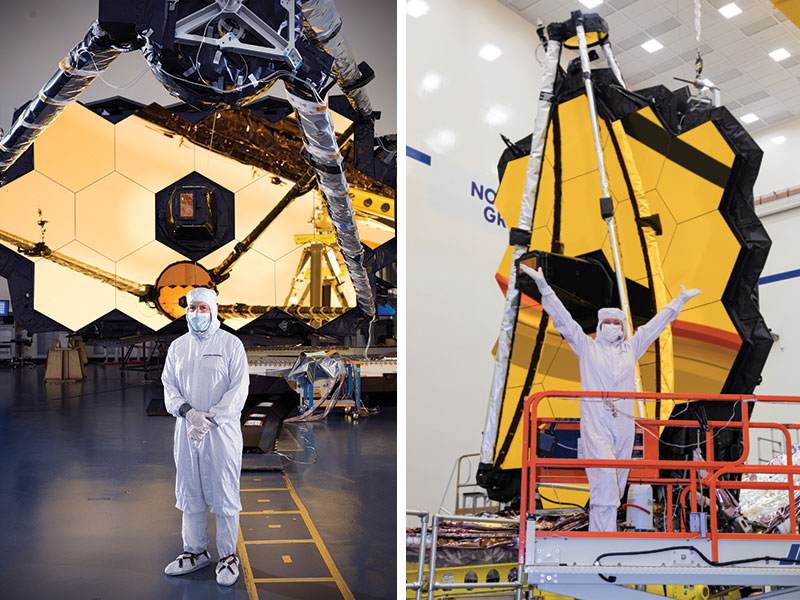
Leading the Way in Aerospace
Rochester Brings a Telescope to Life
Dozens of Rochester faculty and alumni contributed to the development of the James Webb Space Telescope (JWST), the largest and most advanced telescope in space. The JWST was designed as a successor to the 30-year-old Hubble Space Telescope and can capture data from as far back in time as 13.5 billion years ago, when galaxies and stars were first forming.
More about Our Work on JWSTRochester Alumni Launching Careers in Aerospace
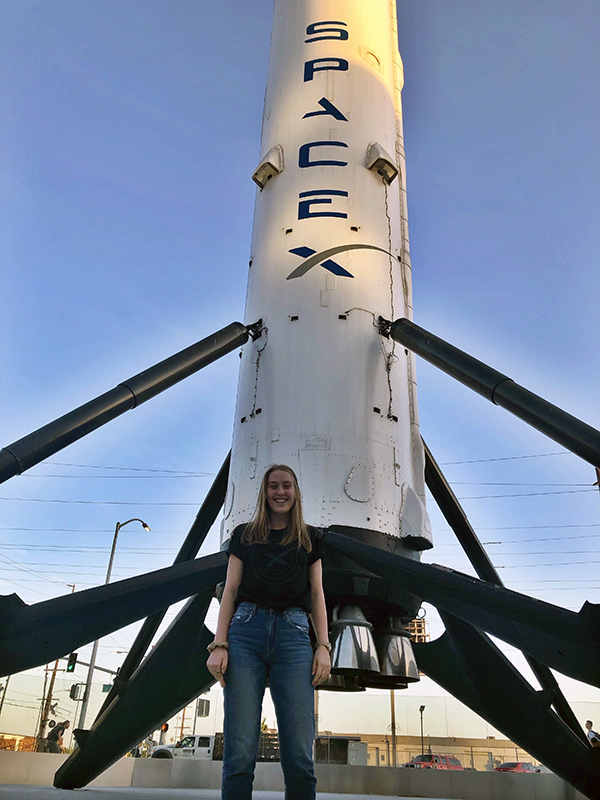
The mechanical engineering department at University of Rochester prepared me for a career in aerospace by providing endless hands-on opportunities, professors that pushed me to understand problems deeper, and career help to prepare for interviews. Classes like Fluids Lab, practical projects during Senior Design and the research opportunities prepared me for the fast-paced troubleshooting that I do every day at SpaceX.
Kate Korslund ’20, test engineer at SpaceX 
The mechanical engineering department at Rochester encouraged building a deep theoretical understanding of mechanical systems, which is crucial when tackling engineering research problems from a first-principles perspective. I was given the freedom to explore relevant research questions the way I saw fit and the opportunities to present my work at conferences and publish in academic journals. The combination of excellent faculty, coursework, research opportunities, and extra-curricular activities has been immensely valuable to my development as an engineer and scientist and put me in an excellent position to start my PhD.
Daniel Troyetsky ’21, aeronautics and astronautics PhD student at Stanford University 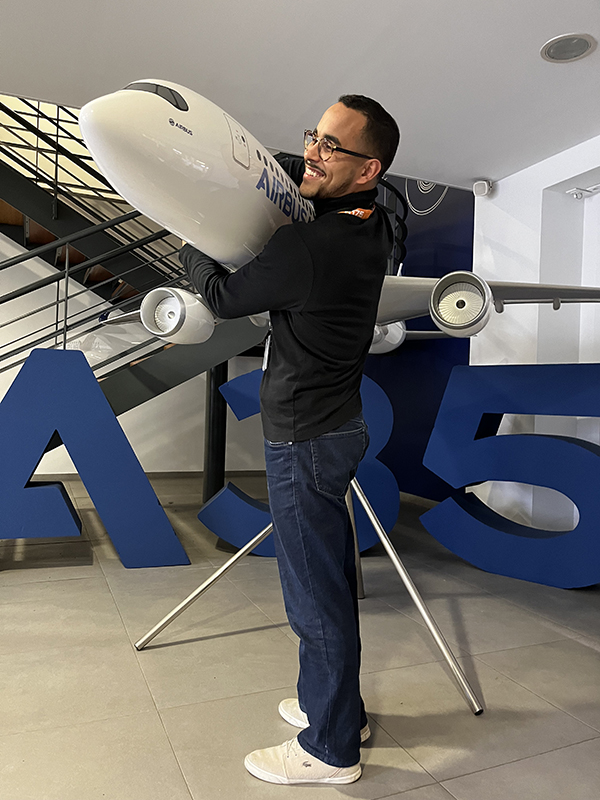
From my Rochester experience, I highlight a couple of key elements in preparing me for my career: 1) a well-rounded summer field school in Ghana that showed that engineering marvels are never detached from history and geopolitics; 2) the responsibility of co-building the Baja car model for the simulation of vehicle dynamics concretized for me the engineering considerations of testing vs modeling; 3) the chance to be a teaching assistant, research assistant, and office assistant was pivotal in preparing me for careers in industry and academia; and 4) classes that united the theoretical and the practical, with the most notable example of Prof. Muir's Senior Design challenge of designing and building a bridge of sticks that would carry the weight of our bodies.
Marcos Dos Santos ’20, aircraft performance airworthiness engineer at Airbus

